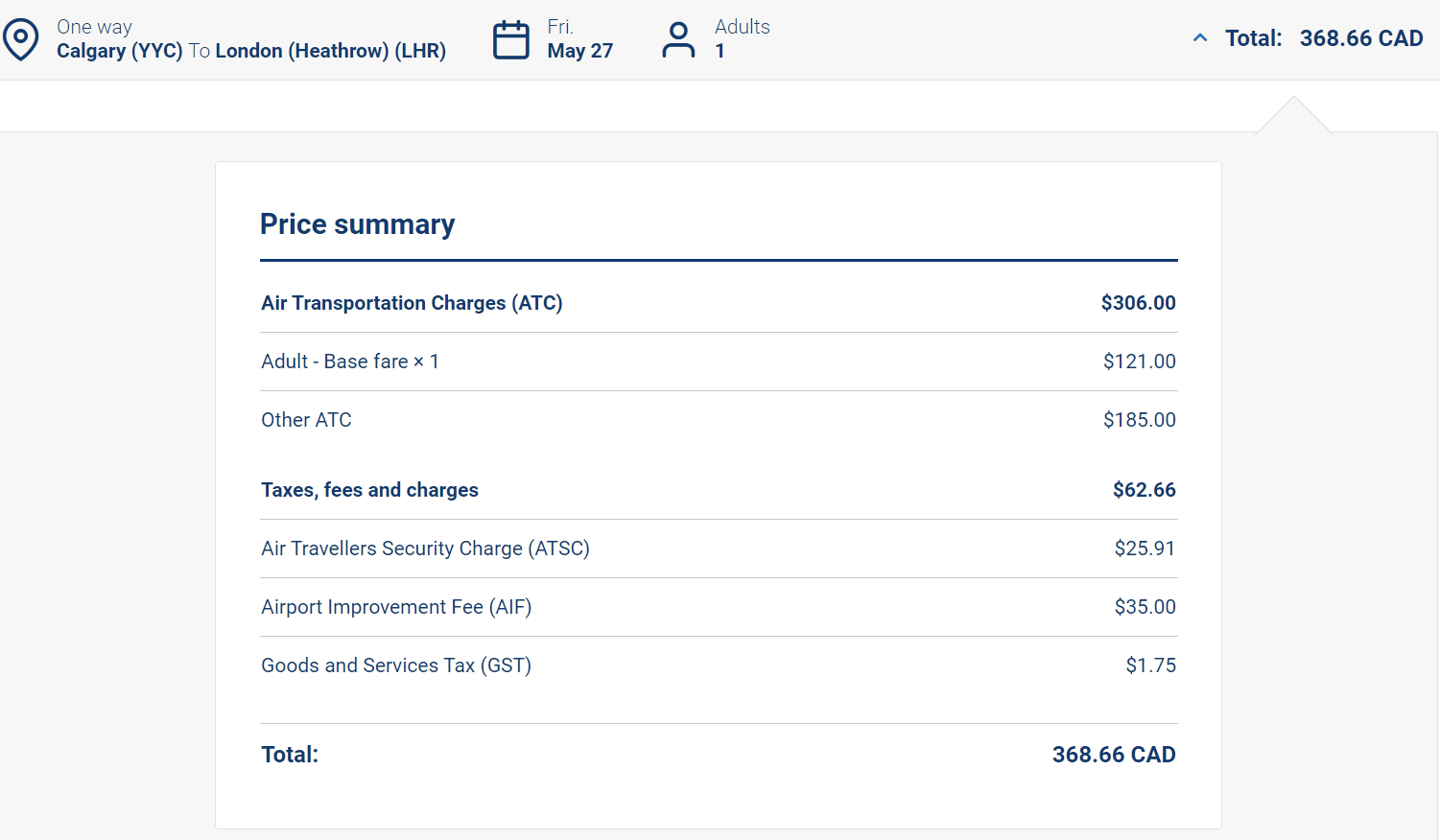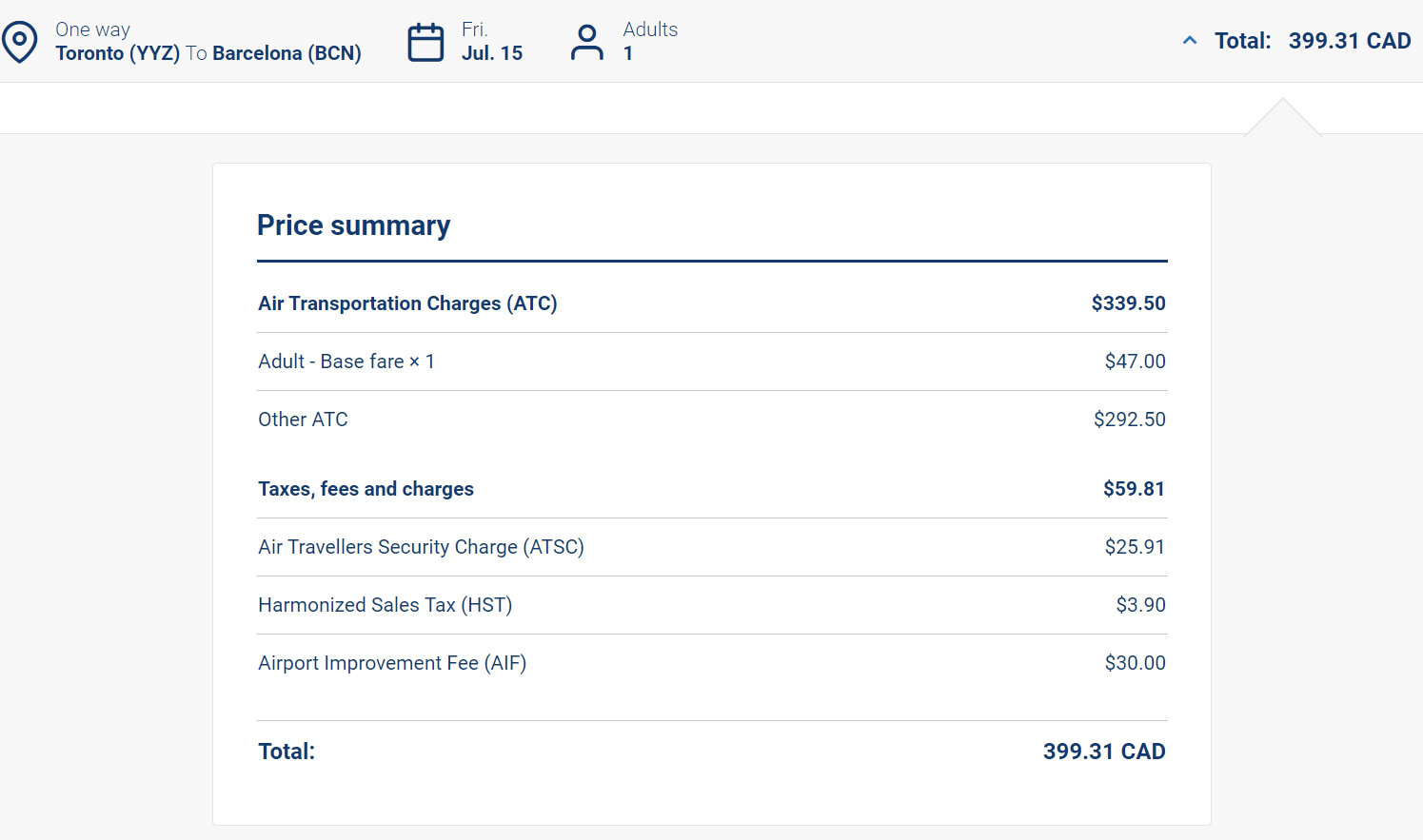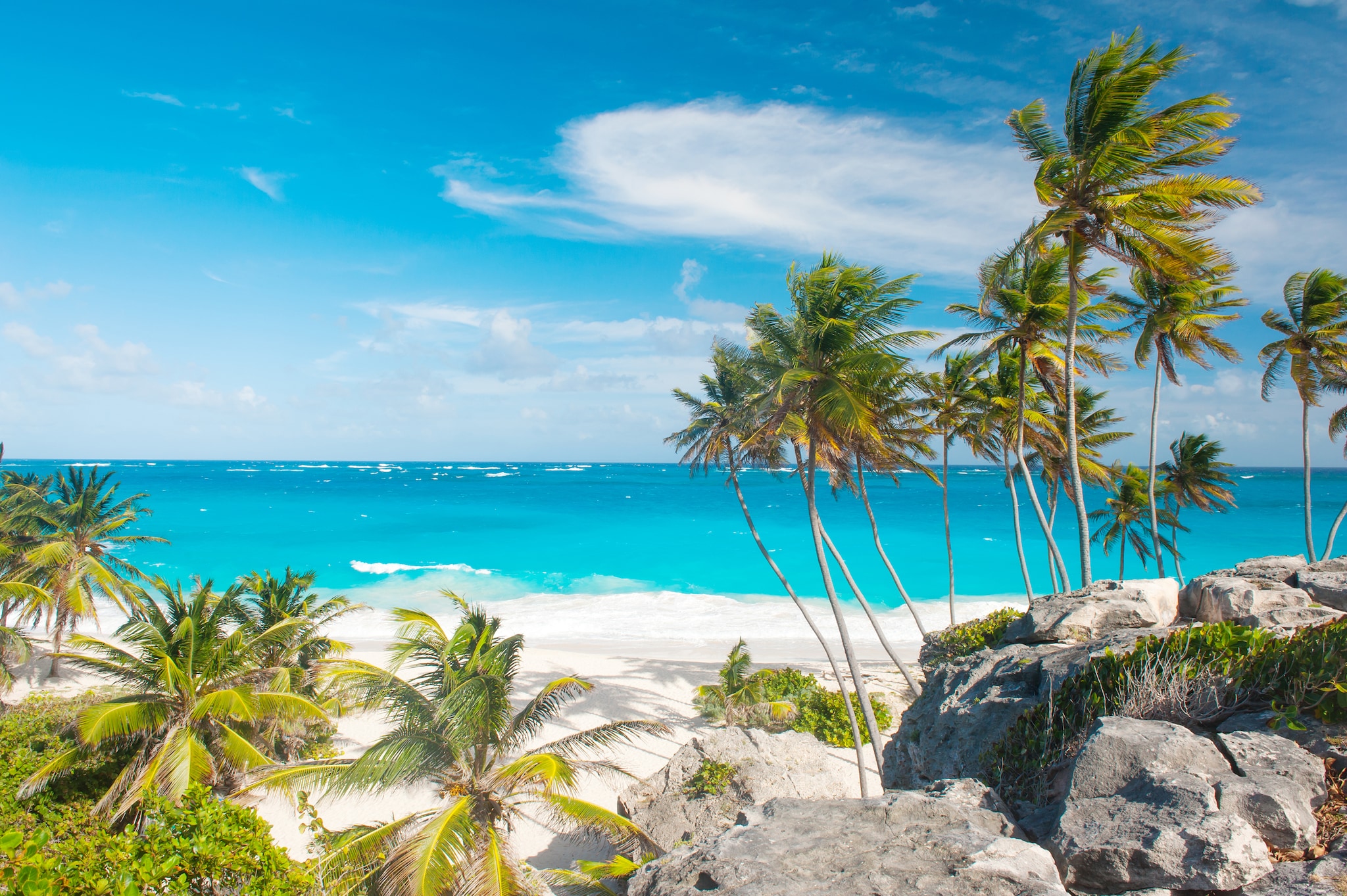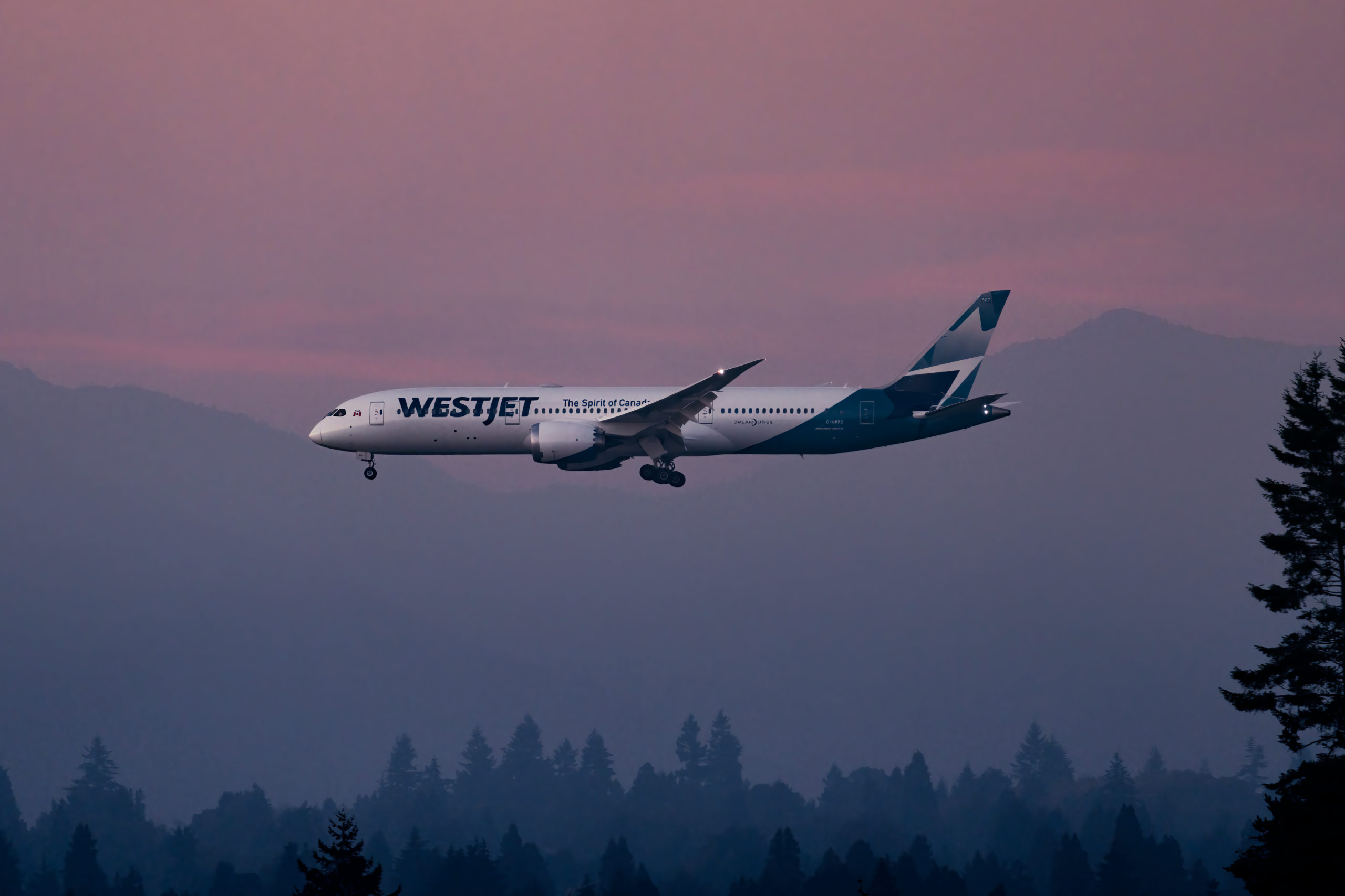WestJet has been in the news a lot more as of late, both as a result of travel rebounding and because they recently took the huge step of acquiring Sunwing.
Personally, I feel it’s a bit of a shame that WestJet has chosen to spend most of their time and effort on expanding their business rather than seeing to their current operations. For me, WestJet itself still has a long way to go.
Nowhere is this more obvious than in the WestJet Rewards loyalty program. Why? Because not only is it hard to accumulate WestJet Dollars, it can be even harder to spend them on travel to desirable locations because of an infamous “Other ATC” charge that is really more of a cloaked fuel surcharge.
While the WestJet Rewards program’s shortcomings on the accumulation side can be offset by strong co-branded credit cards such as the WestJet RBC World Elite Mastercard, it’s the redemption side that has me worried.
So without further ado, let’s get into the not-so-wonderful world of fuel surcharges – and a sweet spot or two where one can avoid them entirely.
Pop Quiz: WestJet Rewards
The WestJet Rewards program allows members to earn rewards in the form of WestJet Dollars (WSD) anytime that they fly a qualifying revenue fare or spend on their co-branded credit cards.
As the name would suggest, these WSD can be used at a $1 (CAD) value on the base fare of any WestJet flight. While this is nice because it means that your rewards can be used toward any redemption you choose, it unfortunately means you are subject to all the wiles of dynamic market pricing.
If you book your WestJet Rewards flight for London this weekend, do not expect the flat rate you could receive from a competing frequent flyer program such as Avios or Aeroplan.

In addition, membership within the WestJet Rewards program offers customers the opportunity to qualify for WestJet’s various status tiers, and also grants them the unique benefit of Member Exclusive fares.
Prior to the pandemic, these fares were actually some of the most competitive on the market. You could fly across Canada in economy class for only $125 WSD plus taxes and fees.
Sadly, all good things must end, and the new Member Exclusive fares leave much to be desired. While the previous Member Exclusive fares were very affordable, and the requisite WSD could be acquired with ease, the new program is entirely dynamic.
It can take a lot longer to accumulate the necessary WSD, and even when one has them, they may run into the dreaded “Other ATC” charges that make the proposition less than economic.
What Is the WestJet “Other ATC”?
Remember how I said that a WestJet Dollar can only be used on the base fare of a WestJet flight? Let’s explore what this means.
On all flights, you’ll be presented with a schedule of costs. These will break your itinerary into two types of payments, as seen on this itinerary from Calgary to Montreal: “Air Transportation Charges (ATC)” and “Taxes, fees, and charges”.

Now, your WestJet Dollars can only be used on the portion of this itinerary labeled as “Base Fare” – everything else would be your responsibility to pay out of pocket.
For the “Taxes, fees, and charges” section, I think this is fair enough, because you’re given an itemized list of charges and where your money is going. As an aviation enthusiast, far be it from me to be against the development of nicer airports.
What bugs me though is the “Other ATC” column. These charges are totally unspecified, but you’re still liable to pay them with cash. In the above example, $30 in ATC is annoying, but will hardly cause me to change my travel plans.
What annoys me is that one can get Base Fares so insultingly low that redeeming WSD seems completely pointless! Take this example for Calgary to London:

I’d also like to note that this is a Member Exclusive fare (which means it should be cheaper), but the full-price refundable EconoFlex ticket has the same amount of cash-payable taxes and fees – and a higher base fare to boot.

To add insult to injury, even if you attempt to combine the trip with a WestJet companion voucher, you’d still have to pay the full taxes, fees, and ATC for the second passenger.
Where You Will See the WestJet “Other ATC”
WestJet isn’t as prolific as its main competitor Air Canada, and so doesn’t act as a true international airline.
Instead, it focuses mostly on the Canadian domestic market, offering a few more casual flight options abroad to higher-frequency tourist destinations in Western Europe, the Caribbean, and Mexico, usually at a reduced cash price compared to Air Canada.
My personal foibles with WestJet aside, I must acknowledge that they do offer an important competitor to Air Canada. Plus, I sympathize with the fact that, as a business, they need to make returns for their shareholders.
But I still absolutely despise the lack of transparency around the “Other ATC” category, and I will call it what it is: a murkily-disguised fuel surcharge. WestJet should just call this charge what it is instead of pretending it’s something else.
That being said, my complaints will do nothing to make any traveller’s plans get any better. So for those of you with a built-up bank of WestJet Dollars, I’ll now enlighten you as to the spots that seem to heavily suffer from this nebulous “Other ATC” charge.

First up, most sadly, are the ultra-hot tourist destinations in Western Europe. We’ve already seen what happens at London Heathrow, but for a Business flight on WestJet’s Dreamliner from Vancouver to Paris via Calgary, you’d be out $630 in “Other ATC” – and that’s before the other prodigious taxes and fees!

Sadly, the Toronto–Barcelona route isn’t much better, even in Basic Economy.

Sweet Spots for Steering Clear of Surcharges
The good news is that it’s still possible to burn large amounts of WestJet Dollars without wasting your hard-earned cash on taxes and fees. In fact, it looks to me like the Sun destinations can provide outsized value when it comes to avoiding this suspicious “Other ATC” charge.

For our first example, let’s consider going to Bridgetown, the capital in the bosom of beautiful Barbados. I’ve always wanted to visit Barbados, not only because of their excellent rum, beaches, and festivities, but also because it’s the burial place to the last claimant to the throne of Constantinople.
If we were to attempt to fly to Bridgetown at the height of the Christmas season, we would only be subject to $22 in “Other ATC” fees in addition to $62 in other surcharges.

This would be a no-brainer booking when sitting on large quantities of WSD. But of course, some of us might want a bit of a different flavour for our vacations, and Barbados is wealthy, so things are a bit more expensive.
What about Cuba, the getaway of Hemingway himself? Well, from Toronto to Varadero, we are similarly treated to a non-invasive “Other ATC” charge that allows us to use our WSD properly….

$22 in “Other ATC” plus $116 in other taxes and fees isn’t super low, but neither is it the highway robbery that the fees to Western Europe can feel like. If I had WestJet Dollars to burn and a vacation to book, I wouldn’t hesitate on this itinerary.
Conclusion
It can be difficult to extract value from WestJet Rewards given the way the loyalty program is set up. This task can become much more frustrating when one considers that the “Other ATC” charge is little more than an arbitrary carrier-imposed surcharge hidden under a friendlier-sounding euphemism.
However, this doesn’t mean that it’s impossible to extract some fun and value from your WestJet Dollars. I hope that all of you with an outsized balance can use your WSD can vote with your fleet and fill up flights to some of the more exotic locations that WestJet serves. Hopefully, their leadership team will then reconsider how they use, position, and market their rewards program.
Until next time, may your legs remain un-cramped in your seating.


